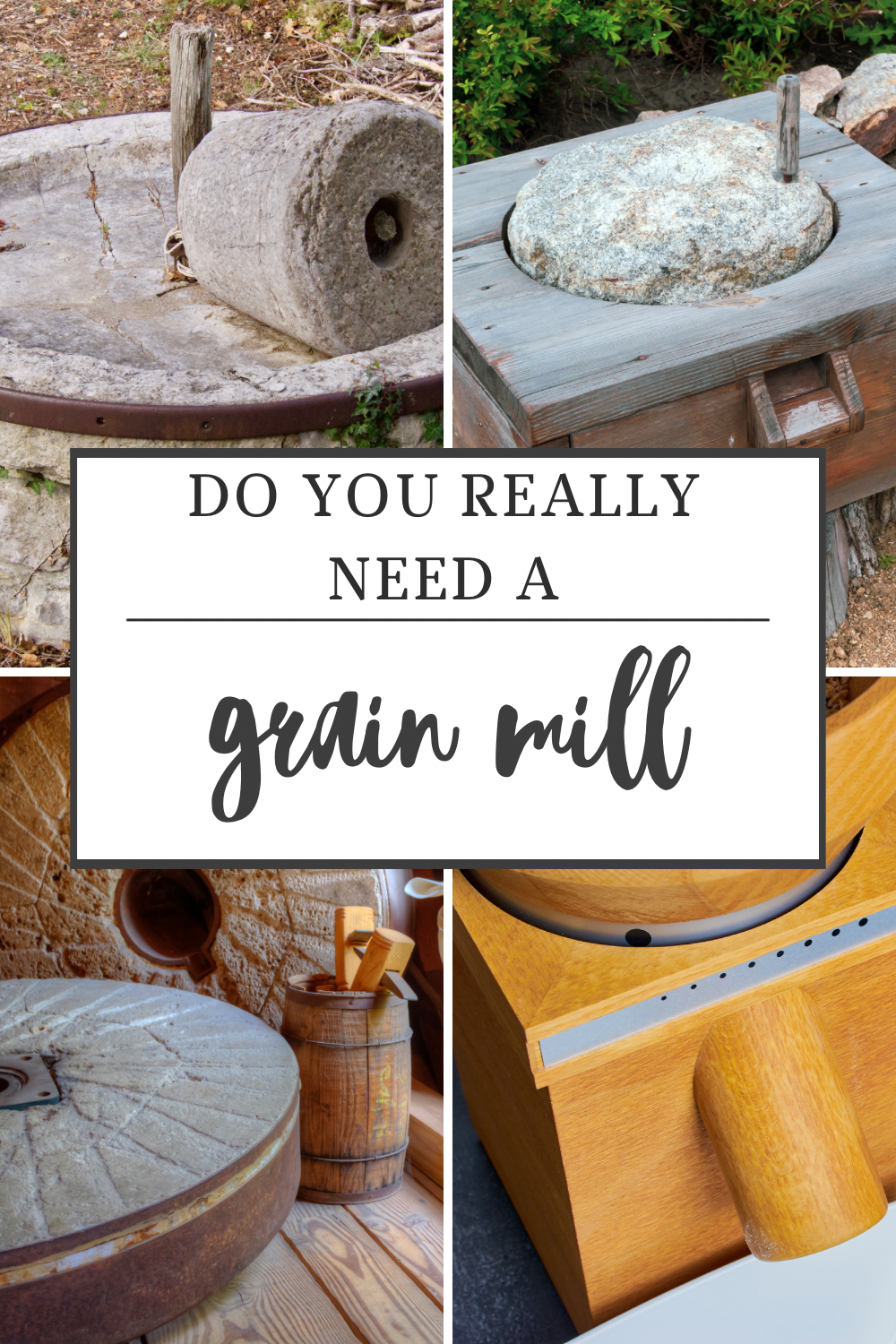Well, that’s debatable. And as someone who is very good at seeing both sides, I’m here to debate it with myself for you.
It’s a confusing time to live in. Grains are bad by half of the diets out there. And yet grains are ever so important in other cultures (and even within history!).

For me, getting a grain mill was a very impulsive purchase. Someone said they cured their hormones by eating solely fresh milled flour alone. Wow. I wanted that. I did more research, the benefits seemed so astounding.
Did I heal my hormones? No. Did I have all these other amazing benefits happen? Not really. I mean, I definitely have more bowel movements. But that’s neither here nor there.

They also say that within 24 hours of milling your grains, half of the nutrients are lost. What?! I have no idea if that’s true. I also have no idea how they could prove that. But when we look back on history, there were these water mills, or millers (hence the last name!). Historically speaking, people would go to these millers once a week or every 3-4 days. So, whether that was out of convenience or necessity or something else, is to be determined, but either way, they all didn’t have their own mills in their homes.

They were however living in a different time. Small communities, with specific people milling. If we could live in a commune and I could be your miller, I totally would! But that’s not the case here. Which is why I think YES we do need our own mills!

The only caveat here is if you have access to a miller. And there is one here in Ohio! It’s an Amish farm and that’s actually where I get the majority of my grains from. But they also mill grains and sell the flour. And I believe they milk them weekly! So, definitely call around your local farms and check out Facebook groups to see if anyone knows of that in your area.

For the rest of us though, I do believe we need our own mills, to have access to healthy unadulterated flour. I have no idea if any of the claims to make you 100% heathier are real. But I do know that this is how God created wheat, then this is probably how we should be eating it. I also believe, as close to nature as possible is always the best policy.
Now, what mill? It’s no secret that I love my stone mill. Again, as close to nature as possible! And what’s closer to nature than some rocks?

That’s not actually why I chose to get a stone mill, it’s actually a bit more scientific than that. The more your grains heat up when they’re milling, supposedly the more nutrients are lost. Again, how can we prove that? I have no idea. I’m sure they can. But why not just buy the mill that doesn’t do that? And also that’s closest to nature.

And, even though fresh milled grains are whole wheat, it tastes NOTHING like the whole wheat flour sold in stores. It is NOT super dense like that flour makes everything. Because it has the bran, the endosperm AND the germ. Whereas store bought typically removes most of the bran, and almost all of the germ so it doesn’t go rancid while sitting on the shelf. So, it doesn’t taste the whole wheat flour you’d get in a store! Just remember that!

Anyways, now that I have figured out how to use fresh milled wheat with my sourdough, I use my grain mill a lot more. I still use it for quick breads, cookies, or regular yeast, but prefer to use it with sourdough because it definitely enhances its flavor AND digestibility.
This is how I rationalize an impulsive $500 purchase. You’re welcome.


2 comments
Comments are closed.